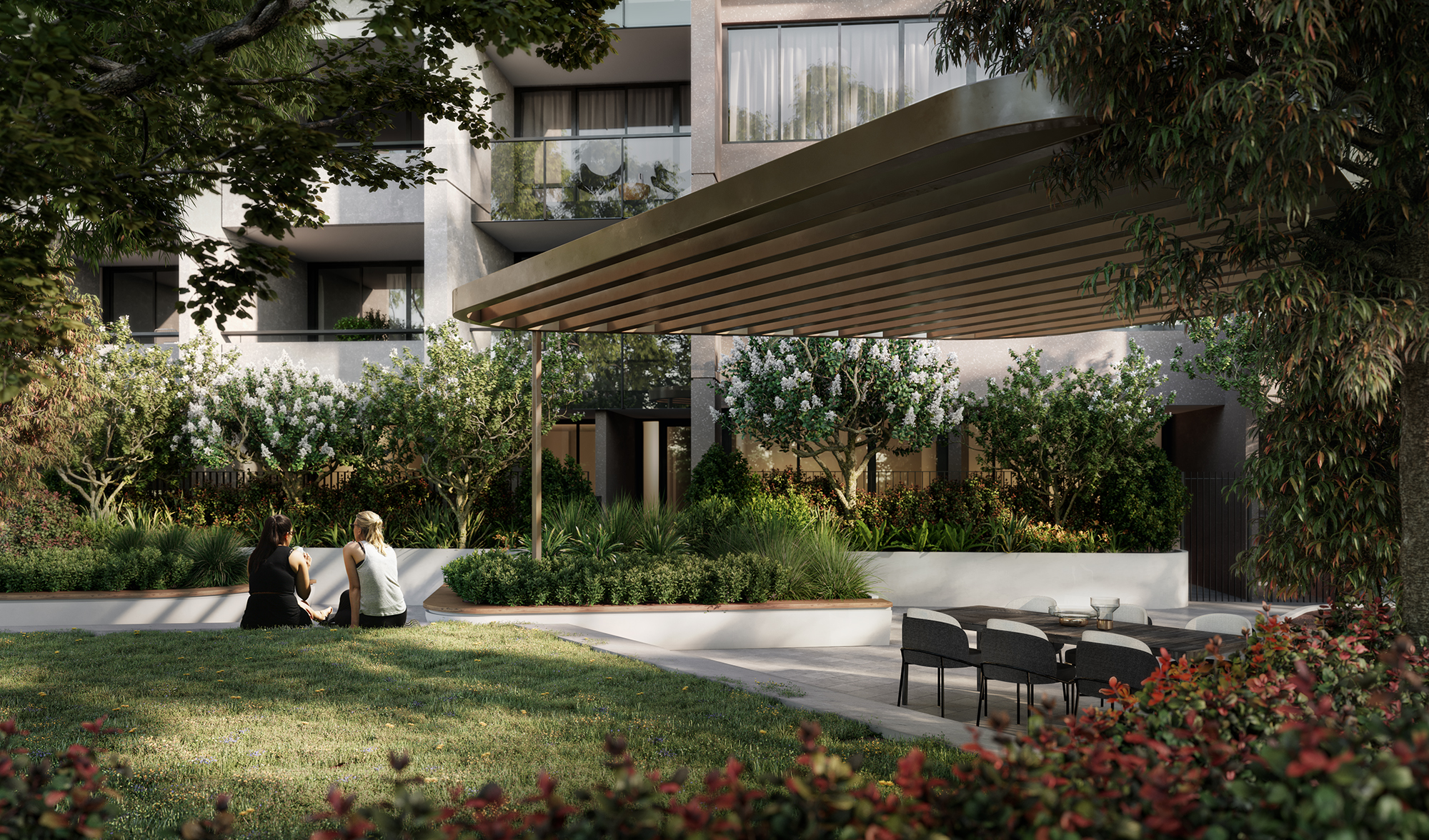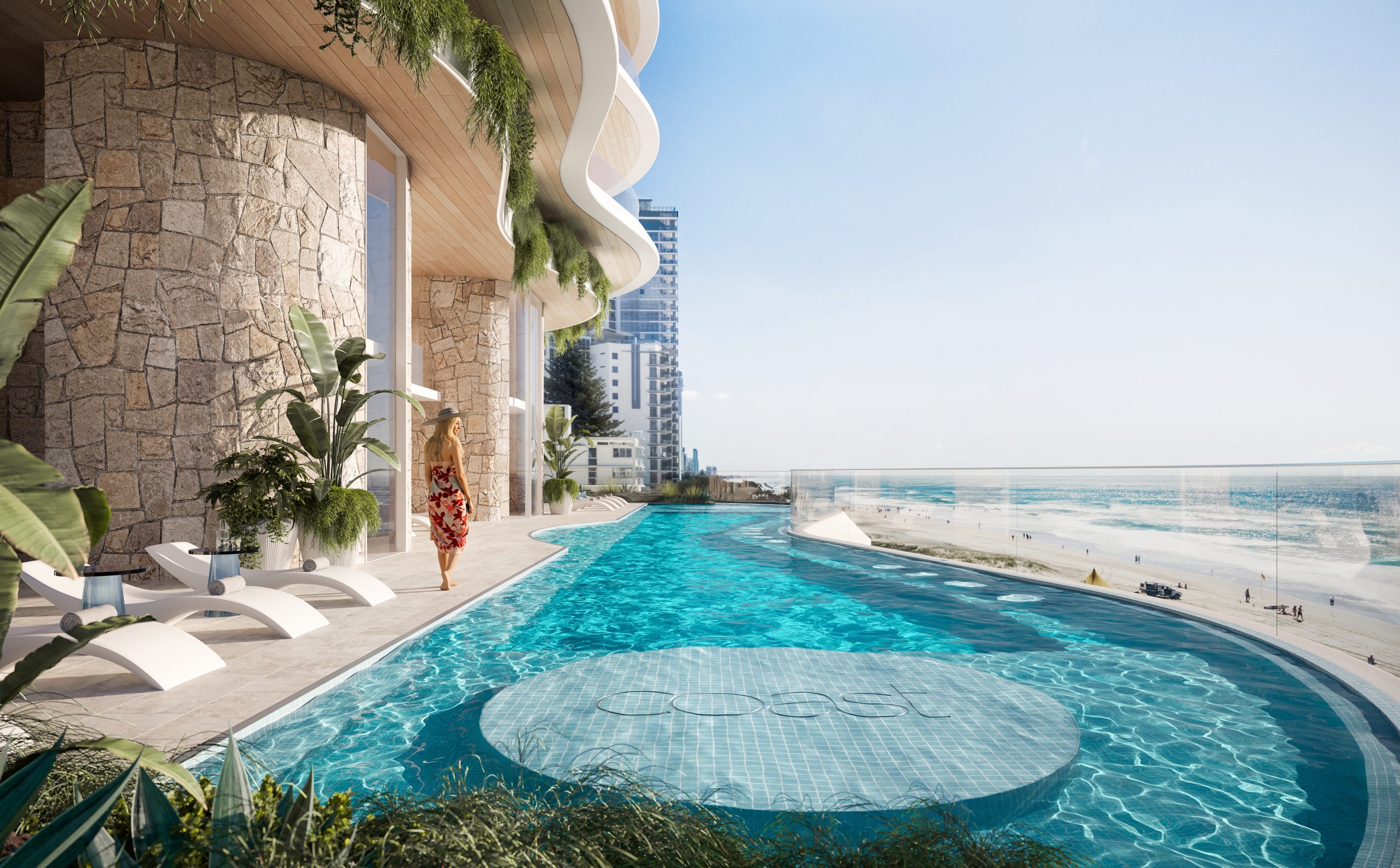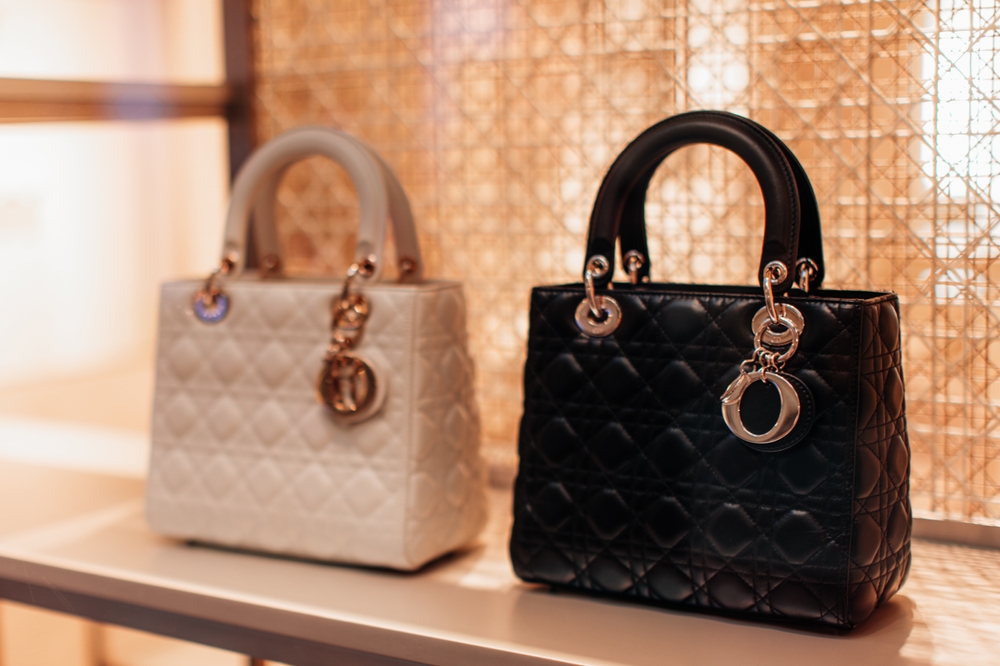How health and happiness is becoming big business in property
Buyers don’t just want somewhere to live, they want a property that will make them feel good as well
Wellness lifestyle real estate is building momentum as a property category, adding up to a staggering $275 billion annual spend globally. And the feel-good factor is only set to grow to around $580 billion by 2025. Calculated by the Global Wellness Institute (GWI), a non profit organisation educating public and private sectors about preventative health and wellness, the group ranks Australia as the third largest market for wellness lifestyle real estate at $16.54 billion.
However “wellness” in the 2020s goes far beyond a token pool or dinky gym in the basement of a residential block. Today, health and wellbeing is being woven into the bricks and mortar of new buildings from the foundations of biophilic design to sophisticated facilities.
A pandemic-induced push for wellness
Australians are a healthy bunch, ranking sixth out of 150 economies in GWI’s Global Wellness Report 2021, with a per capita wellness spend of $5239 a year. As a result, developers down under are sitting up and taking notes.
While this wave of wellness was brewing before COVID, the pandemic is credited with super charging the phenomenon turning medium density buildings into holistic vertical villages where residents can work rest and play, all under one roof.
Want more stories like this? Order your copy of Kanebridge Quarterly magazine here.
Julian Sammut, COO of Sammut Group which is currently selling Vue in Cronulla and Coast on the Gold Coast, says across their residential and commercial projects, wellness has taken a front seat.
“With more of us working from home people don’t want to venture to as many different places to get what they want,” Sammut says. “Our projects are a one-stop shop where everything is integrated into the one building.”
Sammut says the shift to wellness has also been shaped by the type of buyers looking for property.
“Many of our purchasers into these luxury products are downsizers. They’re coming from large houses with lots of personal amenities,” he says, adding that the category of buyers are often facing a lifestyle trade off when moving.
“We wanted to address these compromises and slowly started, even before COVID, to implement wellness into our projects with things like break out areas, pools, spas, ice baths, saunas, massage and Pilates rooms, as well as meditation spaces.”
In addition to physical facilities, Sammut says the group identified the desire for optional services.
“We’re trying to go a step above by allowing purchasers to feel they’re on holiday in their homes every day,” Sammut says. “So you can jump on the concierge service and book in a personal trainer for the gym, or use the service to deliver your groceries. We’ll even stock the fridge and open up your apartment to make sure there’s a nice breeze and a sense calm in the space when you arrive home after a weekend away.”
And developers such as Sammut are looking at the big picture, beyond individual apartments and developments by carefully curating each project’s surroundings.
“At Vue we’ve got a Harris Farm supermarket underneath ensuring residents have direct access with the ease of heading back upstairs to unload their groceries in their apartment,” he says.
“And at Coast, one of the main reasons we bought the site was because it’s next door to the Northcliffe Surf Club and adjacent to a public park that we’re upgrading with child-friendly equipment.”
Getting the green light
Toby Long, Mirvac’s general manager of residential developments for NSW says one of the company’s current ambitions is to achieve a WELL Certification from the International WELL Building Institute (IWBI) for their latest project in Sydney’s Green Square — a first for an Australian developer.
The Frederick and The Portman Collection buildings have a range of features which aim to hit the 11 WELL principles: air, movement, mind, water, thermal comfort, community, nourishment, sound, innovations, light and material.

“If achieved, WELL Certification for a residential apartment building will enable Mirvac to offer a new standard of luxury living,” Long says, adding that in recent years wellness and self-care had risen to the top of Australians’ house hunting wish lists.
“The pandemic, bushfires, and flooding have increased awareness of health and wellbeing. Australians are demanding higher sustainability standards and are rethinking how they live and work.
“With more people working from home, it is crucial to create homes that prioritise health and wellbeing.”
Long says the Frederick and Portman Collection will offer bespoke air conditioning, including a filtration mechanism to improve internal air quality.
“Good design will ensure thermal comfort in your apartment. We’ve achieved this by incorporating dual-aspect apartments that benefit from natural breezes and optimal sunlight,” Long says.
“The design encourages the natural circadian rhythm to support good sleep quality, mood, and productivity with access to natural light and an option to upgrade to tuneable white-to-warm light fixtures, supporting a more natural dawn-to-dusk lighting experience.”
To address the growth in working from home, Long says Mirvac has also created The Business Studio, a co-working lounge with communal spaces, study nooks, WIFI, and AV connectivity for work-life balance.
“It’s a space for residents to work, socialise, and collaborate, bridging the gap between work and home.”
The great outdoors
Although residential developers are champions of the built environment, many are now realising the important role mother nature plays. Mark Hosking, associate director at Fortis, says while the group has a long history of working in the wellness space, they are taking it next level.
“At 8 Brighton Street in Richmond we created what I think is the best rooftop amenity in any residential project in Melbourne,” Hosking says. “We’ve got an outdoor yoga room where we’ll be putting on classes for residents, then an amazing sauna overlooking the bay, with an ice showers.
“On the mental wellness side, we’ve got bookable function spaces to host guests, socialise, and build that sense of community.
“This includes a working from home area so rather than working from your apartment every day, you can go on rooftop to a private co-working space with desks and lounges. It’s next to the communal gardens where people can also farm their own herbs and vegetables while meeting their neighbours.”
Contemporary design principles are also front and centre of Fortis’ present and future projects, according to Hosking.
“At our recently completed project in Brighton, Pillar + Tide, we’ve taken a biophilic design approach where we’ve brought vegetation into people’s lives with really large outdoor spaces so people can exercise and enjoy fresh air at home,” he says.
“We see wellness as equal parts physical health and mental health. There’s a lot of great research that talks about how a connection to nature and access to green space driving people’s mental happiness.
“So we try to overlay landscaping into the biophilic design concept because it not only has to look beautiful, but people are happier when they have that connection to nature within their own home.”
This stylish family home combines a classic palette and finishes with a flexible floorplan
Just 55 minutes from Sydney, make this your creative getaway located in the majestic Hawkesbury region.
Ahead of the Games, a breakdown of the city’s most desirable places to live
PARIS —Paris has long been a byword for luxurious living. The traditional components of the upscale home, from parquet floors to elaborate moldings, have their origins here. Yet settling down in just the right address in this low-rise, high-density city may be the greatest luxury of all.
Tradition reigns supreme in Paris real estate, where certain conditions seem set in stone—the western half of the city, on either side of the Seine, has long been more expensive than the east. But in the fashion world’s capital, parts of the housing market are also subject to shifting fads. In the trendy, hilly northeast, a roving cool factor can send prices in this year’s hip neighborhood rising, while last year’s might seem like a sudden bargain.
This week, with the opening of the Olympic Games and the eyes of the world turned toward Paris, The Wall Street Journal looks at the most expensive and desirable areas in the City of Light.
The Most Expensive Arrondissement: the 6th
Known for historic architecture, elegant apartment houses and bohemian street cred, the 6th Arrondissement is Paris’s answer to Manhattan’s West Village. Like its New York counterpart, the 6th’s starving-artist days are long behind it. But the charm that first wooed notable residents like Gertrude Stein and Jean-Paul Sartre is still largely intact, attracting high-minded tourists and deep-pocketed homeowners who can afford its once-edgy, now serene atmosphere.
Le Breton George V Notaires, a Paris notary with an international clientele, says the 6th consistently holds the title of most expensive arrondissement among Paris’s 20 administrative districts, and 2023 was no exception. Last year, average home prices reached $1,428 a square foot—almost 30% higher than the Paris average of $1,100 a square foot.
According to Meilleurs Agents, the Paris real estate appraisal company, the 6th is also home to three of the city’s five most expensive streets. Rue de Furstemberg, a secluded loop between Boulevard Saint-Germain and the Seine, comes in on top, with average prices of $2,454 a square foot as of March 2024.
For more than two decades, Kyle Branum, a 51-year-old attorney, and Kimberly Branum, a 60-year-old retired CEO, have been regular visitors to Paris, opting for apartment rentals and ultimately an ownership interest in an apartment in the city’s 7th Arrondissement, a sedate Left Bank district known for its discreet atmosphere and plutocratic residents.
“The 7th was the only place we stayed,” says Kimberly, “but we spent most of our time in the 6th.”
In 2022, inspired by the strength of the dollar, the Branums decided to fulfil a longstanding dream of buying in Paris. Working with Paris Property Group, they opted for a 1,465-square-foot, three-bedroom in a building dating to the 17th century on a side street in the 6th Arrondissement. They paid $2.7 million for the unit and then spent just over $1 million on the renovation, working with Franco-American visual artist Monte Laster, who also does interiors.
The couple, who live in Santa Barbara, Calif., plan to spend about three months a year in Paris, hosting children and grandchildren, and cooking after forays to local food markets. Their new kitchen, which includes a French stove from luxury appliance brand Lacanche, is Kimberly’s favourite room, she says.
Another American, investor Ashley Maddox, 49, is also considering relocating.
In 2012, the longtime Paris resident bought a dingy, overstuffed 1,765-square-foot apartment in the 6th and started from scratch. She paid $2.5 million and undertook a gut renovation and building improvements for about $800,000. A centrepiece of the home now is the one-time salon, which was turned into an open-plan kitchen and dining area where Maddox and her three children tend to hang out, American-style. Just outside her door are some of the city’s best-known bakeries and cheesemongers, and she is a short walk from the Jardin du Luxembourg, the Left Bank’s premier green space.
“A lot of the majesty of the city is accessible from here,” she says. “It’s so central, it’s bananas.” Now that two of her children are going away to school, she has listed the four-bedroom apartment with Varenne for $5 million.
The Most Expensive Neighbourhoods: Notre-Dame and Invalides
Garrow Kedigian is moving up in the world of Parisian real estate by heading south of the Seine.
During the pandemic, the Canada-born, New York-based interior designer reassessed his life, he says, and decided “I’m not going to wait any longer to have a pied-à-terre in Paris.”
He originally selected a 1,130-square-foot one-bedroom in the trendy 9th Arrondissement, an up-and-coming Right Bank district just below Montmartre. But he soon realised it was too small for his extended stays, not to mention hosting guests from out of town.
After paying about $1.6 million in 2022 and then investing about $55,000 in new decor, he put the unit up for sale in early 2024 and went house-shopping a second time. He ended up in the Invalides quarter of the 7th Arrondissement in the shadow of one Paris’s signature monuments, the golden-domed Hôtel des Invalides, which dates to the 17th century and is fronted by a grand esplanade.
His new neighbourhood vies for Paris’s most expensive with the Notre-Dame quarter in the 4th Arrondissement, centred on a few islands in the Seine behind its namesake cathedral. According to Le Breton, home prices in the Notre-Dame neighbourhood were $1,818 a square foot in 2023, followed by $1,568 a square foot in Invalides.
After breaking even on his Right Bank one-bedroom, Kedigian paid $2.4 million for his new 1,450-square-foot two-bedroom in a late 19th-century building. It has southern exposures, rounded living-room windows and “gorgeous floors,” he says. Kedigian, who bought the new flat through Junot Fine Properties/Knight Frank, plans to spend up to $435,000 on a renovation that will involve restoring the original 12-foot ceiling height in many of the rooms, as well as rescuing the ceilings’ elaborate stucco detailing. He expects to finish in 2025.
Over in the Notre-Dame neighbourhood, Belles demeures de France/Christie’s recently sold a 2,370-square-foot, four-bedroom home for close to the asking price of about $8.6 million, or about $3,630 a square foot. Listing agent Marie-Hélène Lundgreen says this places the unit near the very top of Paris luxury real estate, where prime homes typically sell between $2,530 and $4,040 a square foot.
The Most Expensive Suburb: Neuilly-sur-Seine
The Boulevard Périphérique, the 22-mile ring road that surrounds Paris and its 20 arrondissements, was once a line in the sand for Parisians, who regarded the French capital’s numerous suburbs as something to drive through on their way to and from vacation. The past few decades have seen waves of gentrification beyond the city’s borders, upgrading humble or industrial districts to the north and east into prime residential areas. And it has turned Neuilly-sur-Seine, just northwest of the city, into a luxury compound of first resort.
In 2023, Neuilly’s average home price of $1,092 a square foot made the leafy, stately community Paris’s most expensive suburb.
Longtime residents, Alain and Michèle Bigio, decided this year is the right time to list their 7,730-square-foot, four-bedroom townhouse on a gated Neuilly street.
The couple, now in their mid 70s, completed the home in 1990, two years after they purchased a small parcel of garden from the owners next door for an undisclosed amount. Having relocated from a white-marble château outside Paris, the couple echoed their previous home by using white- and cream-coloured stone in the new four-story build. The Bigios, who will relocate just back over the border in the 16th Arrondissement, have listed the property with Emile Garcin Propriétés for $14.7 million.
The couple raised two adult children here and undertook upgrades in their empty-nester years—most recently, an indoor pool in the basement and a new elevator.
The cool, pale interiors give way to dark and sardonic images in the former staff’s quarters in the basement where Alain works on his hobby—surreal and satirical paintings, whose risqué content means that his wife prefers they stay downstairs. “I’m not a painter,” he says. “But I paint.”
The Trendiest Arrondissement: the 9th
French interior designer Julie Hamon is theatre royalty. Her grandfather was playwright Jean Anouilh, a giant of 20th-century French literature, and her sister is actress Gwendoline Hamon. The 52-year-old, who divides her time between Paris and the U.K., still remembers when the city’s 9th Arrondissement, where she and her husband bought their 1,885-square-foot duplex in 2017, was a place to have fun rather than put down roots. Now, the 9th is the place to do both.
The 9th, a largely 19th-century district, is Paris at its most urban. But what it lacks in parks and other green spaces, it makes up with nightlife and a bustling street life. Among Paris’s gentrifying districts, which have been transformed since 2000 from near-slums to the brink of luxury, the 9th has emerged as the clear winner. According to Le Breton, average 2023 home prices here were $1,062 a square foot, while its nearest competitors for the cool crown, the 10th and the 11th, have yet to break $1,011 a square foot.
A co-principal in the Bobo Design Studio, Hamon—whose gut renovation includes a dramatic skylight, a home cinema and air conditioning—still seems surprised at how far her arrondissement has come. “The 9th used to be well known for all the theatres, nightclubs and strip clubs,” she says. “But it was never a place where you wanted to live—now it’s the place to be.”
With their youngest child about to go to college, she and her husband, 52-year-old entrepreneur Guillaume Clignet, decided to list their Paris home for $3.45 million and live in London full-time. Propriétés Parisiennes/Sotheby’s is handling the listing, which has just gone into contract after about six months on the market.
The 9th’s music venues were a draw for 44-year-old American musician and piano dealer, Ronen Segev, who divides his time between Miami and a 1,725-square-foot, two-bedroom in the lower reaches of the arrondissement. Aided by Paris Property Group, Segev purchased the apartment at auction during the pandemic, sight unseen, for $1.69 million. He spent $270,000 on a renovation, knocking down a wall to make a larger salon suitable for home concerts.
During the Olympics, Segev is renting out the space for about $22,850 a week to attendees of the Games. Otherwise, he prefers longer-term sublets to visiting musicians for $32,700 a month.
Most Exclusive Address: Avenue Junot
Hidden in the hilly expanses of the 18th Arrondissement lies a legendary street that, for those in the know, is the city’s most exclusive address. Avenue Junot, a bucolic tree-lined lane, is a fairy-tale version of the city, separate from the gritty bustle that surrounds it.
Homes here rarely come up for sale, and, when they do, they tend to be off-market, or sold before they can be listed. Martine Kuperfis—whose Paris-based Junot Group real-estate company is named for the street—says the most expensive units here are penthouses with views over the whole of the city.
In 2021, her agency sold a 3,230-square-foot triplex apartment, with a 1,400-square-foot terrace, for $8.5 million. At about $2,630 a square foot, that is three times the current average price in the whole of the 18th.
Among its current Junot listings is a 1930s 1,220-square-foot townhouse on the avenue’s cobblestone extension, with an asking price of $2.8 million.
This stylish family home combines a classic palette and finishes with a flexible floorplan
Just 55 minutes from Sydney, make this your creative getaway located in the majestic Hawkesbury region.


















